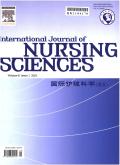Influence of standardized patient combined with narrative nursing teaching on experimental teaching of surgical nursing: A quasi-experimental study
IF 3.1
3区 医学
Q1 NURSING
引用次数: 0
Abstract
Objective
This study aimed to explore the effect of standardized patient (SP)-narrative nursing in the experimental teaching of surgical nursing.
Methods
A quasi-experimental study design was adopted. A total of 200 undergraduate nursing students were recruited from the Nursing College of Guilin Medical University in China from March 2023 to December 2024. The intervention group recruited students from the Class of 2022 (n = 100), and the control group recruited students from the Class of 2021 (n = 100). The intervention group adopted a teaching model combining standardized patients with narrative nursing based on traditional scenario-based simulation teaching, which was applied to the nursing of perioperative patients (4 class hours) and scenario-based case drills (4 class hours) in the experimental teaching of surgical nursing. The control group used traditional scenario-based simulation teaching. The Nurse Humanistic Care Quality Evaluation Scale, Clinical Thinking Ability Evaluation Index System Scale for Medical Students, and Nurse-Patient Communication Ability Evaluation Scale for Nursing Students were used to investigate and compare the teaching effects between the two groups of students.
Results
The total scores of the intervention group on humanistic care (91.39 ± 3.97), clinical thinking (79.64 ± 6.33), and nurse-patient communication (157.22 ± 7.95) abilities were significantly higher than those of the control group (82.29 ± 3.62, 65.11 ± 7.24, and 147.05 ± 7.84, respectively), with statistically significant differences (P < 0.01).
Conclusion
This study confirms that integrating the dual teaching model of standardized patients and narrative nursing in experimental teaching of surgical nursing has significantly optimized the theoretical and practical structure of teaching strategies. This innovative teaching method provides a promotable paradigm for nursing humanities education and is of positive significance for improving the effectiveness of cultivating the core literacy of nursing talents.
规范化患者结合叙事式护理教学对外科护理实验教学的影响:一项准实验研究
目的探讨规范化病人叙事护理在外科护理实验教学中的应用效果。方法采用准实验研究设计。本研究于2023年3月至2024年12月从中国桂林医科大学护理学院招募200名本科护理专业学生。干预组招收2022级学生(n = 100),对照组招收2021级学生(n = 100)。干预组在传统情境模拟教学的基础上,采用规范化患者与叙事式护理相结合的教学模式,应用于围手术期患者护理(4学时)和情境案例演练(4学时)的外科护理实验教学。对照组采用传统的基于场景的模拟教学。采用《护士人文关怀质量评价量表》、《医学生临床思维能力评价指标体系量表》和《护患沟通能力评价量表》对两组学生的教学效果进行调查比较。结果干预组人文关怀总分(91.39±3.97)分、临床思维总分(79.64±6.33)分、护患沟通总分(157.22±7.95)分显著高于对照组(82.29±3.62、65.11±7.24、147.05±7.84)分,差异有统计学意义(P < 0.01)。结论本研究证实,在外科护理实验教学中整合规范化患者与叙事化护理双重教学模式,显著优化了教学策略的理论与实践结构。这种创新的教学方法为护理人文教育提供了一种可推广的范式,对提高护理人才核心素养培养的有效性具有积极意义。
本文章由计算机程序翻译,如有差异,请以英文原文为准。
求助全文
约1分钟内获得全文
求助全文
来源期刊

International Journal of Nursing Sciences
Nursing-Nursing (all)
CiteScore
6.10
自引率
2.60%
发文量
408
审稿时长
25 days
期刊介绍:
This journal aims to promote excellence in nursing and health care through the dissemination of the latest, evidence-based, peer-reviewed clinical information and original research, providing an international platform for exchanging knowledge, research findings and nursing practice experience. This journal covers a wide range of nursing topics such as advanced nursing practice, bio-psychosocial issues related to health, cultural perspectives, lifestyle change as a component of health promotion, chronic disease, including end-of-life care, family care giving. IJNSS publishes four issues per year in Jan/Apr/Jul/Oct. IJNSS intended readership includes practicing nurses in all spheres and at all levels who are committed to advancing practice and professional development on the basis of new knowledge and evidence; managers and senior members of the nursing; nurse educators and nursing students etc. IJNSS seeks to enrich insight into clinical need and the implications for nursing intervention and models of service delivery. Contributions are welcomed from other health professions on issues that have a direct impact on nursing practice.
 求助内容:
求助内容: 应助结果提醒方式:
应助结果提醒方式:


